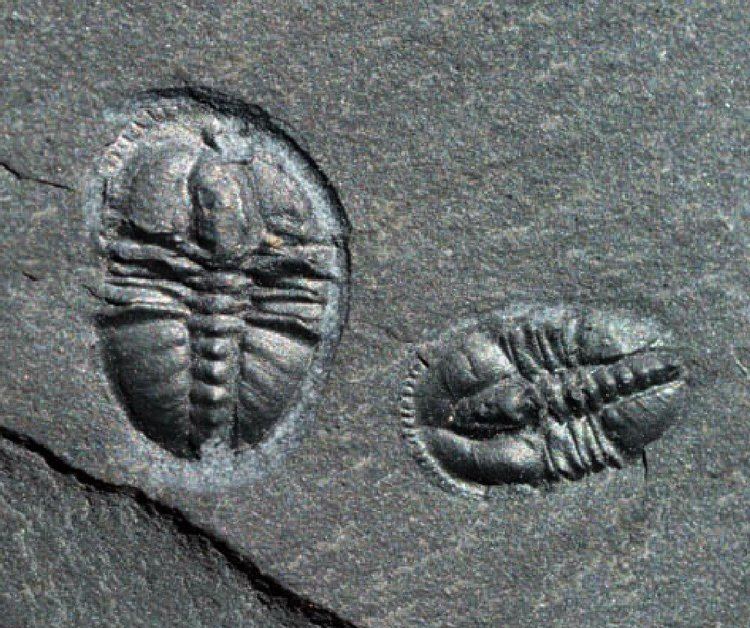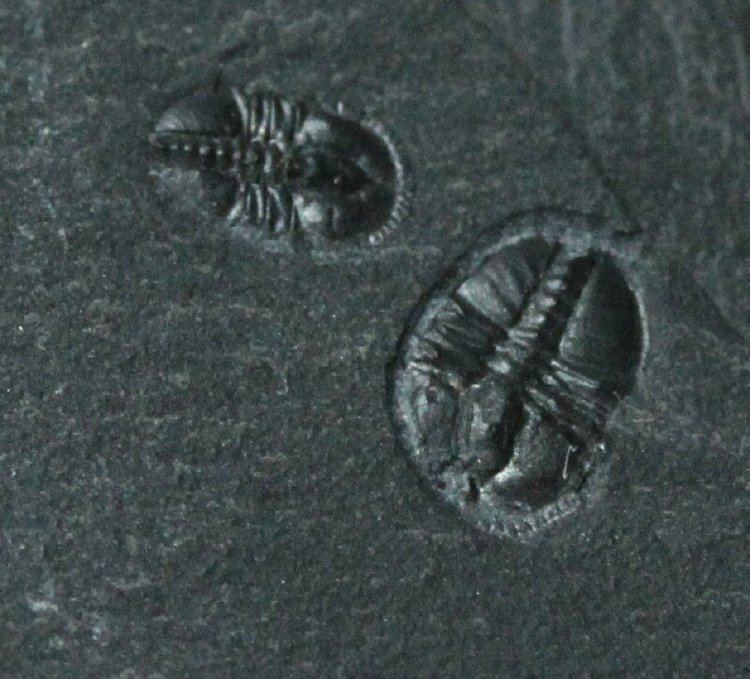Order Agnostida | Class Trilobita Rank Genus | |
 | ||
Similar Agnostida, Eodiscina, Kootenia, Bathyuriscus, Ptychagnostus | ||
Pagetia is a genus of very small, agnostid trilobites, assigned to the family Eodiscidae, and that had a global distribution during the Middle Cambrian. The genus contains 55 currently recognized species, each with a limited spatial and temporal distribution.
Contents

Species previously assigned to Pagetia
Description

The head shield (or cephalon) and tail shield (or pygidium) are approximately of the same size and shape like in other agnostids, with eyes, free cheeks and proparian sutures. There is no well-defined furrow between the front of the glabellum and the anterior border furrow. The glabellum is well defined, slightly tapering forward, with a large subhorizontal spine extending from the back of the glabella. The anterior border furrow usually shows a series of radiating ridges (like spokes), a widespread feature among eodiscids. There are no spines extending from the angle between the side and the back of the cephalon called genal spines. The 2 thoracic segments each consisting of a horizontal inner portion that abruptly passes into an inclined outer portion (fulcrate). The lateral tip of the frontal segment points backwards, while that of the rear segment points forwards, to enable enrolment. The axis in the pygidium (or rhachis) is well defined, reaches or overhangs the posterior border and usually has five distinctive rings and is extended backwards in a firm spike. Because eyes, spines and spikes are fragile features, these may be lost through erosion in many specimens.
The palate (or hypostome) is a convex (the centre bulging down), subquadrate plate, positioned directly under the frontal part of the glabella. It is comparable to hypostomes of other trilobites and provides an argument that Agnostida can be regarded as specialized, simplified trilobites.
Ecology
Several species of Pagetia are known from the Burgess Shale. 1022 specimens of Pagetia are known from the Greater Phyllopod bed, where they comprise 1.94% of the community. Its remains are sometimes found in the otherwise-empty tubes of the polychaete worm Selkirkia.
